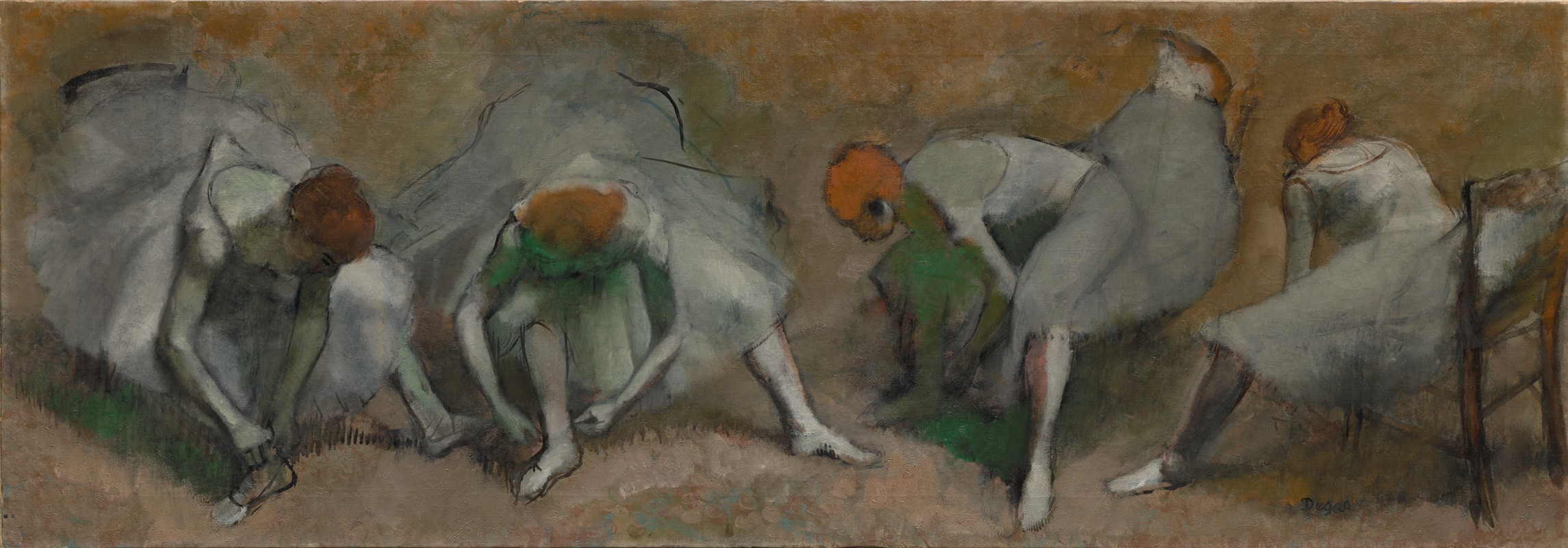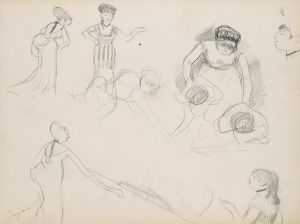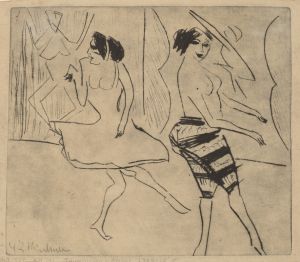
Frieze of Dancers
A hand-painted replica of Edgar Degas’s masterpiece Frieze of Dancers, meticulously crafted by professional artists to capture the true essence of the original. Each piece is created with museum-quality canvas and rare mineral pigments, carefully painted by experienced artists with delicate brushstrokes and rich, layered colors to perfectly recreate the texture of the original artwork. Unlike machine-printed reproductions, this hand-painted version brings the painting to life, infused with the artist’s emotions and skill in every stroke. Whether for personal collection or home decoration, it instantly elevates the artistic atmosphere of any space.
"Frieze of Dancers" is a notable work by the French artist Edgar Degas, created in the late 19th century. Degas, renowned for his depictions of ballet dancers, explored themes of movement, grace, and the human form throughout his career. This particular piece exemplifies his fascination with capturing the dynamic poses and gestures of dancers in rehearsal or performance.
The artwork is a pastel on paper, a medium Degas frequently employed to achieve vibrant colors and fluid lines. "Frieze of Dancers" features a series of ballerinas arranged in a horizontal composition, resembling a frieze—a decorative band often found in classical architecture. The dancers are depicted in various poses, showcasing their flexibility and the physical demands of their craft. Degas's use of pastel allowed him to layer colors and create a sense of immediacy, emphasizing the fleeting moments of movement.
Degas's approach to composition in this work is particularly striking. The dancers are arranged in a continuous sequence, with overlapping figures that suggest motion and rhythm. This arrangement reflects his interest in Japanese prints, which often featured asymmetrical compositions and a focus on line and form. The influence of photography is also evident, as Degas was known to study photographic techniques to better understand how to capture movement and perspective.
"Frieze of Dancers" is part of Degas's broader exploration of ballet as a subject, which he pursued extensively during the 1870s and 1880s. His works often depicted dancers in candid, behind-the-scenes moments, offering a glimpse into the rigorous training and discipline required of performers. Rather than idealizing his subjects, Degas portrayed them with a sense of realism, highlighting their physicality and the labor involved in their art.
The exact date of creation for "Frieze of Dancers" is not definitively documented, but it is generally attributed to the later years of Degas's career. The piece is housed in the National Gallery of Art in Washington, D.C., where it remains a testament to Degas's mastery of pastel and his innovative approach to composition and subject matter.
Degas's work, including "Frieze of Dancers," continues to be celebrated for its ability to capture the beauty and complexity of human movement. His focus on dancers not only elevated the subject within the art world but also provided a unique perspective on the intersection of art and performance.


















